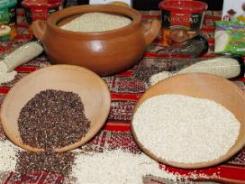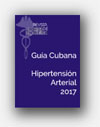Barriers to achieving blood pressure treatment targets in elderly hypertensive individuals
 Por: E K Chowdhury, A Owen, H Krum, L M H Wing, P Ryan, M R Nelson4 y C M Reid on behalf of the Second Australian National Blood Pressure Study Management Committee. Journal of Human Hypertension (2013) 27, 545–551.
Por: E K Chowdhury, A Owen, H Krum, L M H Wing, P Ryan, M R Nelson4 y C M Reid on behalf of the Second Australian National Blood Pressure Study Management Committee. Journal of Human Hypertension (2013) 27, 545–551.
High blood pressure (BP) is highly prevalent among the elderly, and even with pharmacological therapy BP is difficult to control to guideline recommended levels. Although poor compliance to therapy is associated with less BP control, little is known regarding other barriers to attaining on-treatment target BP. This study examined factors associated with achieving on-treatment target BP in 6010 hypertensive participants aged 65–84 years from the Second Australian National Blood Pressure study. Participants were followed for a median of 4.1 years, with BP monitored every 6 months. [Actualizado: 16 de agosto 2013].
Estudios importantes sobre hipertension arterial de Cuba y el mundo
Ethnic differences in genetic predisposition to hypertension
 Por: Norihiro Kato. Hypertension Research (2012) 35, 574–581.
Por: Norihiro Kato. Hypertension Research (2012) 35, 574–581.
Recently, large-scale meta-analyses of genome-wide association (GWA) studies have identified a number of loci significantly associated with systolic and/or diastolic blood pressure (BP). Most of the GWA studies reported to date were conducted in populations of European descent. Given the appreciable ethnic differences in clinical presentation of hypertension, studies in non-European populations allow us to assess the relevance of the findings in Europeans to other ethnic groups and to potentially discover novel variants. Before the GWA scan era, the presence of racial or ethnic differences has been widely recognized for response to antihypertensive therapies, salt sensitivity and impact of obesity on developing hypertension. [Actualizado: 22 de agosto 2013].
Hunting for genes for hypertension: the Millennium Genome Project for Hypertension
 Por: Yasuharu Tabara, Katsuhiko Kohara y Tetsuro Miki on behalf of the study group of the Millennium Genome Project for Hypertension. Hypertension Research (2012) 35, 567–573.
Por: Yasuharu Tabara, Katsuhiko Kohara y Tetsuro Miki on behalf of the study group of the Millennium Genome Project for Hypertension. Hypertension Research (2012) 35, 567–573.
The Millennium Genome Project for Hypertension was started in 2000 to identify genetic variants conferring susceptibility to hypertension, with the aim of furthering the understanding of the pathogenesis of this condition and realizing genome-based personalized medical care. Two different approaches were launched, genome-wide association analysis using single-nucleotide polymorphisms (SNPs) and microsatellite markers, and systematic candidate gene analysis, under the hypothesis that common variants have an important role in the etiology of common diseases. These multilateral approaches identified ATP2B1 as a gene responsible for hypertension in not only Japanese but also Caucasians. The high blood pressure susceptibility conferred by certain alleles of ATP2B1 has been widely replicated in various populations. [Actualizado: 22 de agosto 2013].
Artículos sobre Genética e hipertensión arterial.
Por: Majid Nikpay, Ondrej Šeda, Johanne Tremblay, Milan Petrovich, Daniel Gaudet, Theodore A Kotchen, Allen W Cowley Jr y Pavel Hamet. Hypertension Research (2012) 35, 585–591.
Por: Yoshihiro Iwamoto, Mitsuru Ohishi, Ming Yuan, Yuji Tatara, Nozomi Kato, Yasushi Takeya, Miyuki Onishi, Yoshihiro Maekawa, Kei Kamide and Hiromi Rakugi. Hypertens Res 34: 294-295; January 20, 2011.
Por: Norihiro Kato, Fumihiko Takeuchi, Yasuharu Tabara, Tanika N Kelly, Min Jin Go, Xueling Sim, Wan Ting Tay, et al. Nature Genetics 43, 531–538, (2011).
Mapping genetic determinants of kidney damage in rat models.
Por: Angela Schulz y Reinhold Kreutz. Hypertens Res 35: 675-694; May 31, 2012.
Marcadores genéticos en hipertensión esencial
Por: Cristóbal Passalacqua y Silvia Castillo Taucher. Rev. méd. Chile v.138 n.6 Santiago jun. 2010.
Para poder ver la noticia de su fuente original debe tener internet.
La quinua puede combatir la hipertensión y prevenir el cáncer
 Una serie de propiedades medicinales en la quinua, entre las que destacan su capacidad para combatir la hipertensión arterial y como antioxidante para prevenir el cáncer, han sido descubiertas por científicos peruanos gracias al apoyo del Consejo Nacional de Ciencia, Tecnología e Innovación Tecnológica (Concytec).
Una serie de propiedades medicinales en la quinua, entre las que destacan su capacidad para combatir la hipertensión arterial y como antioxidante para prevenir el cáncer, han sido descubiertas por científicos peruanos gracias al apoyo del Consejo Nacional de Ciencia, Tecnología e Innovación Tecnológica (Concytec).
Estos nuevos atributos de la quinua, que se suman a su extraordinaria composición nutricional, fueron obtenidos por David Campos Gutiérrez –experto en biotecnología alimentaria de la Universidad Nacional Agraria La Molina–, al estudiar la proteína y las enzimas de dos variedades de este cultivo alto andino.
El uso industrial de la quinua en la cosmética (champús, jabones y otros) forma parte de la labor de la investigadora Ana Pastor, quien trabajó con variedades llamadas “amargas” como la Maranganí y Sacaca, que crecen en la región Cusco.
Estos dos importantes hallazgos científicos peruanos forman parte de un conjunto de diez proyectos de investigación del Programa de Subvenciones Especiales, que desarrolla el Concytec.
Otro proyecto está relacionado con la seguridad alimentaria y la inclusión social, mediante la evaluación agronómica, caracterización morfológica y química del Banco Nacional de Germoplasma de Quinua, proyecto a cargo de Germán de la Cruz Lapa.
También hay investigaciones que buscan el aprovechamiento de las diversas variedades y la aplicación de técnicas innovadoras de cultivo y de combate ecológico de plagas, para incrementar los rendimientos por hectárea del llamado “grano de oro de los incas”.
(Fuente: http://www.rpp.com.pe) [Actualizado: 23 de agosto 2013].
 Genetic mapping of habitual substance use, obesity-related traits, responses to mental and physical stress, and heart rate and blood pressure measurements reveals shared genes that are overrepresented in the neural synapse.
Genetic mapping of habitual substance use, obesity-related traits, responses to mental and physical stress, and heart rate and blood pressure measurements reveals shared genes that are overrepresented in the neural synapse.






![Glosario: hipertensión [Hipertensión arterial en la atención primaria de salud. 2009]](http://temas.sld.cu/hipertension/files/2016/04/Glosario-e1541006177950.jpg)



Comentarios recientes